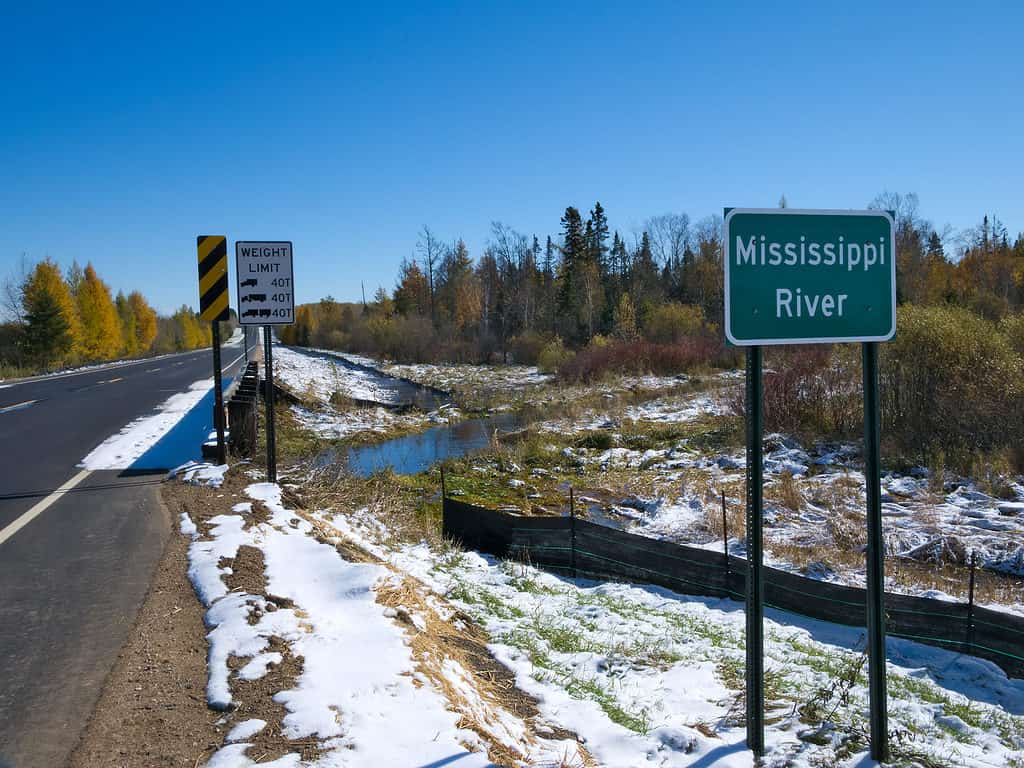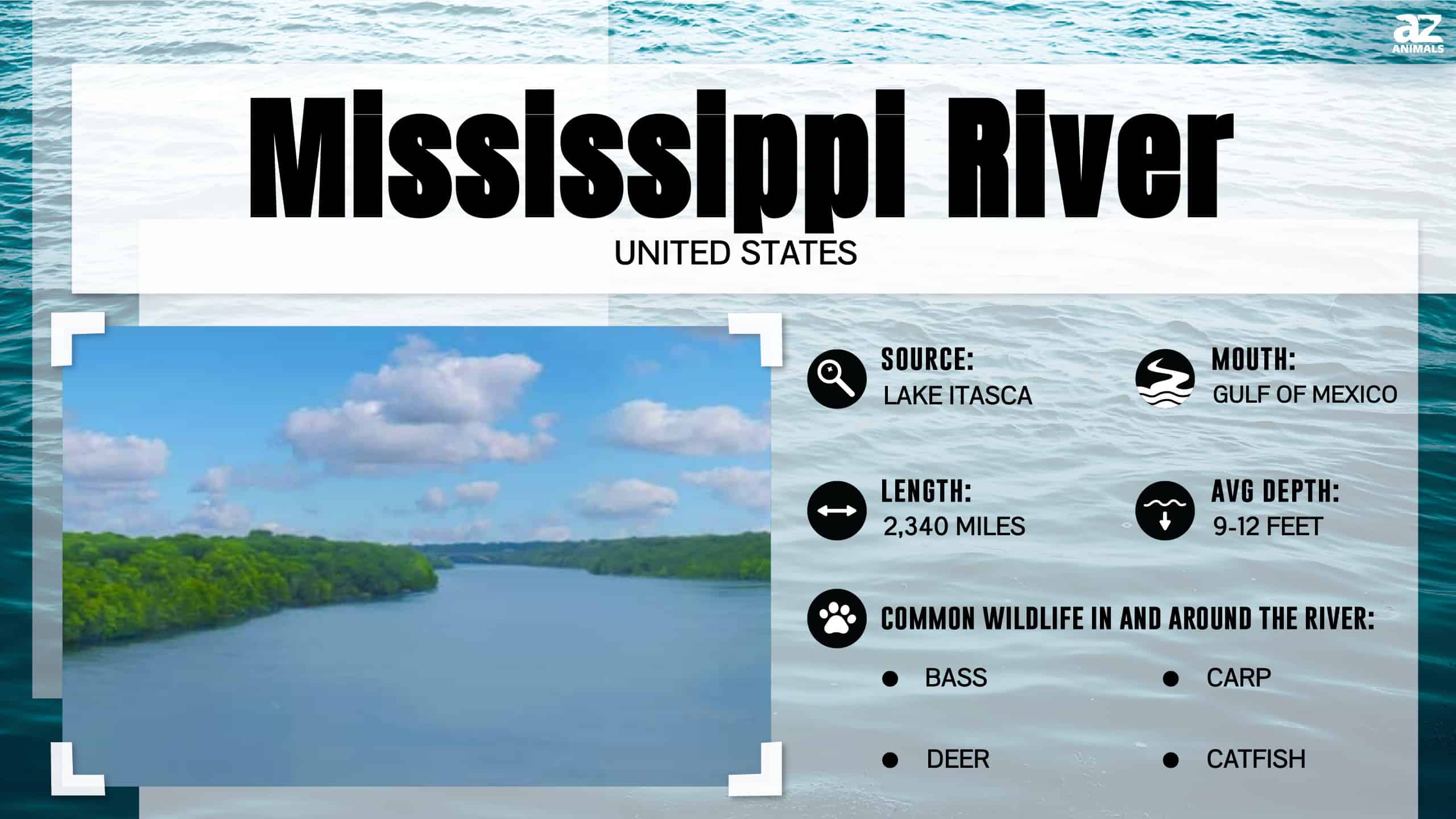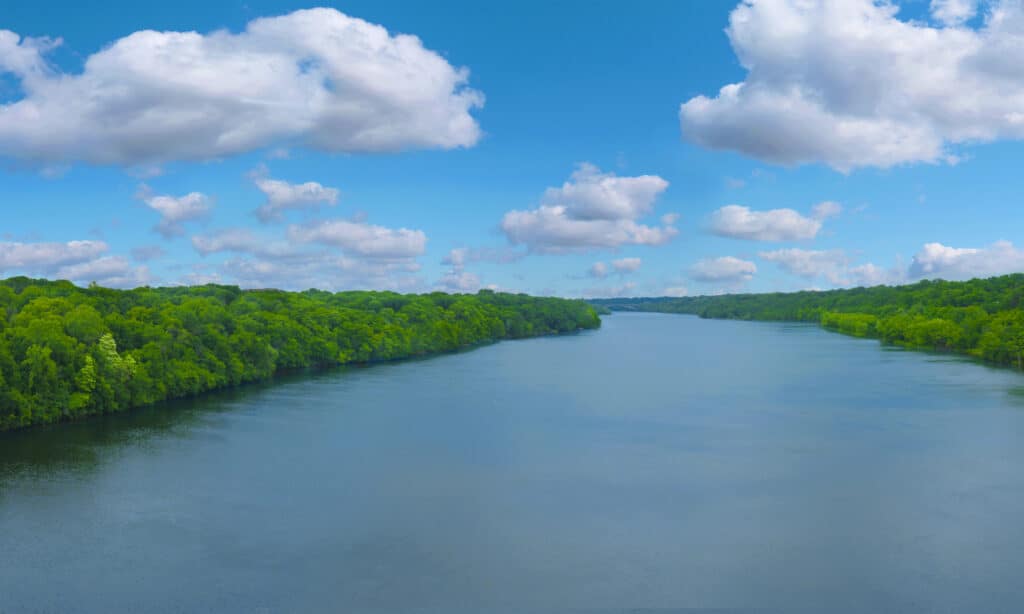The Mississippi River is one of the longest rivers in the United States, running for over 2,300 miles and passing through ten different states. While it is known for its warm and humid climate, some parts of the river can get quite chilly, particularly in the winter. Today, we will explore just how cold the Mississippi River can get, plus find out how these temperatures impact the rest of the river’s ecosystem. Let’s get started!
The Location of the Coldest Point

The coldest point of the Mississippi River is located near the river’s headwaters in northern Minnesota.
©Edgar Lee Espe/Shutterstock.com
The coldest point of the Mississippi River is located near the headwaters of the river in northern Minnesota. Specifically, it can be found in Itasca State Park, where the river begins its long journey to the Gulf of Mexico. This area is known for its cold and snowy winters, with temperatures regularly dropping below freezing from November through March.
Generally speaking, water can’t get below freezing point before it turns to ice, so once a river dips below that threshold, it doesn’t get any colder! Still, there are places around the Mississippi River that can get cold. Since the Mississippi starts in the far northern state of Minnesota, it only makes sense that this is exactly where the coldest point along the river would be.

The Temperature at the Coldest Point
Itasca State Park is famous for being the home of the headwaters of the Mississippi River, via Lake Itasca, within the park itself. There is a famous photo-op at the tip of the northern arm of Lake Itasca where people head for a chance to sit (or swim) where the greatest river in the United States begins. Temperatures around this area can get quite cold during the year, and with it being so far north, it’s likely the home of the coldest place along the Mississippi.
For example, in December, January, and February, the average temperature is documented as 11°F, 3°F, and 3°F, respectively. That’s pretty cold! Even when accounting for the monthly highs, the warmest average month during the winter is December, with a monthly average high of 21°F. On top of the temperature, there is an average of 61 days of snowfall from December to February, meaning it’s snowing around 2/3 of the entire season.
The Impact of the Cold on the River

The cold temperatures can cause the Mississippi River to flow more slowly.
©Milen Mkv/Shutterstock.com
When the temperature drops below freezing at the coldest point in the Mississippi River, it can significantly impact the river itself. The most obvious effect is that the water in the river will begin to freeze, forming large sheets of ice several feet thick. This can make it difficult or impossible for boats to navigate the river, disrupting transportation and commerce.
In addition to the formation of ice, the cold temperatures can also cause the river to flow more slowly. This is because cold water is denser than warmer water, which means that it is less able to move as quickly. As a result, the river may become more shallow and sluggish in the winter months, making it less hospitable to fish and other aquatic life.
Occasionally, the river will get so cold and move so slowly that it totally freezes in some parts, although this is rare. This usually only happens in Minnesota or Missouri, where the coldest temps along the river are recorded. The process is known as an “ice gorge” since the ice flows stack up along the sides.
Still, as the river winds south, the warmer climate closer to the equator slowly warms the water. Eventually, it dumps into the Gulf of Mexico through Louisiana, where it’s usually warm year-round since it rarely drops below 50°F.
The Benefits of the Cold
While the cold temperatures at the coldest point in the Mississippi River can have some negative effects, they also have some benefits. For example, ice formation can help protect the river from erosion and other types of damage. The ice acts as a barrier, preventing waves and currents from eroding the banks of the river and washing away soil and vegetation.
In addition, cold temperatures can also help to oxygenate the water in the river. Cold water is more oxygen-rich than warmer water, which means that it can support a greater variety of aquatic life. This can help maintain a healthy and diverse ecosystem in the river, which can benefit wildlife and humans.
The photo featured at the top of this post is © Plume Photography/Shutterstock.com
Thank you for reading! Have some feedback for us? Contact the AZ Animals editorial team.






